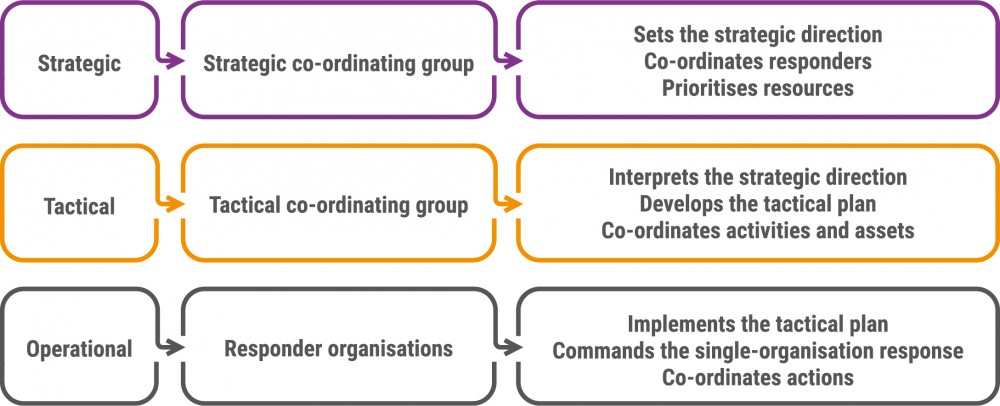The Joint Doctrine refers only to the generic response structure and not the specific functional activities of individual organisations. There should be a clear and identifiable commander or representative who is responsible for co-ordinating the activity of their organisation at each level of command.
Strategic
Each strategic commander has overall authority on behalf of their organisation. They
are responsible for identifying and allocating resources and developing the strategy for their own organisation. They may delegate decisions to their respective tactical commanders.
Tactical
In the initial stages of an incident, first responders are responsible for tactics. Once the scale and nature of the incident is known, emergency services will appoint officers to act as tactical commanders for their organisation.
Other responder organisations may also appoint individuals to act as tactical commanders or co-ordinators on behalf of their organisations where
relevant.
Operational
Operational commanders will be working with colleagues from other responder organisations. This will most likely be at, or close to, the scene of the incident.
They will control and deploy the resources of their respective organisation within a functional or geographical area, and will implement the tactical plan as directed by the tactical
commander.

